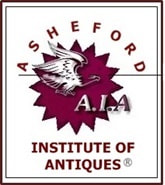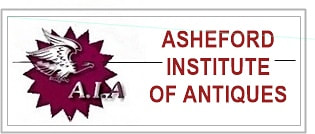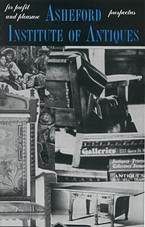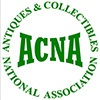 New York - For many, especially during the time of Covid, it may come as somewhat of a surprise to think that today's Millennial generation could be having some kind of meaningful impact on economic issues related to the decorative arts, however, a recent international survey of this groups online habits related to antiques, art and vintage buying trends, may finally be putting this old refrain of a lost and directionless generation to rest for good. According to the latest analysis on the fiscal state of today's decorative arts industry ("The Market Report 2020"), released by Art Basel and UBS earlier this year found that Millennials were the most active online collectors of any demographic group, and currently make up almost half of all global collectors, according to the survey's author, Clare McAndrew. Besides just the raw numbers, McAndrew also noted in her study that millennial collectors were also the most active consignors when it came to placing items up for sale with online auctions, with over seventy-percent saying they’d resold items from their collections (compared to just one-third of boomer collectors). The frequency with which millennials turned over items in their collections was also highlighted in the report, indicating that millennials, unlike boomers, also seemed to be more interested in making short-term capital gains on their decorative art collections, rather than holding and hoping for long-term growth. McAndrew also commented on millennials motivation for buying in the first place. "Everybody says I buy it for passion, and things like that, but when you look at their actual behavior, they’re getting in and out of the market pretty quickly.” she said. “They’re acting very financially for being so aesthetically motivated.” While the Basel report is perhaps the strongest and most recent indicator yet of a resurgent interest in the world of antiques and the decorative arts by a new generation of collectors, it is by no means the first signpost to signal such a dramatic change in collecting behavior. Anthony Harper, lead researcher for the Asheford Institute's own poll and yearly survey of top trends within the antique and vintage community, said he began noticing the age shift a couple of years ago. "We started getting our questionnaires coming back from dealers and antique malls indicating a much younger demographic than in the past," said Harper. "Even today, in the midst of the Covid pandemic, many dealers are reporting that the lion-share of their sales are not only coming online, but from millennials as well."  Millennials Have Become Consistent Clients For Many Dealers Millennials Have Become Consistent Clients For Many Dealers For Timothy Pike, a pop-up dealer and picker from the South, who was featured in the school's Antiques For Millennials article from last June, the whole process has continued to evolve. "Last year I was selling lower-end Victorian furniture to these folks," he said. "Today some of these same people are back, except this time with an emailed laundry-list of higher quality items they're hoping I can pick for them." Pike believes that despite the millennials adeptness at online tasks, there are just some things he's better suited to doing. "I'll do the real-world rummaging," he said, "and leave the Internet sleuthing to the kids - as long as they're paying for my time - I'm fine with that." Karen Risener, an online dealer from Seattle, who's also a millennial, says she's read the ART Basel report and agrees with many of its conclusions. "I don't even structure my inventory towards baby boomers anymore," said Risener. "They're no longer buyers - they're sellers." Risener said she thinks her generation has a special connection with things from the past, and that's part of the reason why antique and vintage dealers are seeing increased sales from her demographic. Predicting interest in the future direction of the antiques and vintage marketplace can be difficult enough in an ordinary year - without a pandemic - but add to that shop closures and a shortened retail season due to the shut-downs, and suddenly having a few "spend-happy" millennials in your corner can start to look pretty good, especially when the sales are online. Whether millennials remain long-term collectors and replace the famous boomers who fed and nourished the antique and collectible industry like no other during the roaring 1970s and 80s remains to be seen, but at least we now have some solid evidence that this once seemingly lost generation may have finally found a purpose that we can all invest in... - A.I.A. Staff Writers  NOTE: For readers seeking more information about the Asheford Institute Of Antiques distance-learning program on professional-level appraising, the study of antiques, collectibles, vintage and mid-century modern items, please click here to visit the school's Home Page. Should you have additional questions about the Asheford program, you can also write to the school at: [email protected] or call the Registrar's Office toll-free at: 1-877-444-4508 |
AIA StaffWe're providing our students and reader's with the latest breaking news on events and happenings that we think might be of interest to both collectors and dealers alike. Including changes within the world of antiques, vintage, collectibles and appraising that might just have an effect on your bottom line. We're also interested in hearing from you - so if you've got a great newsworthy story, let us know, and you just might find it here! Archives
July 2024
CategoriesLegal Disclaimer: Extraneous opinions, statements and comments made by individuals represented within these posts do not necessarily reflect those of the Institute. The publication naming of specific business entities, organizations, and concerns, contained herein, in no way represents an endorsement or recommendation of services or products by the Institute. Publicly identifiable information contained herein (including, but not limited to contact information), has been intentionally limited where possible, due to privacy and legal concerns related to the digital dissemination of information through online means. All views expressed herein are those of their respective owners. The Institute is in no way responsible, financially or otherwise, for the accuracy or validity of statements contained within published posts from sources that originate and appear outside of the written and expressed views of those submitted by the Institute.
|

 RSS Feed
RSS Feed




